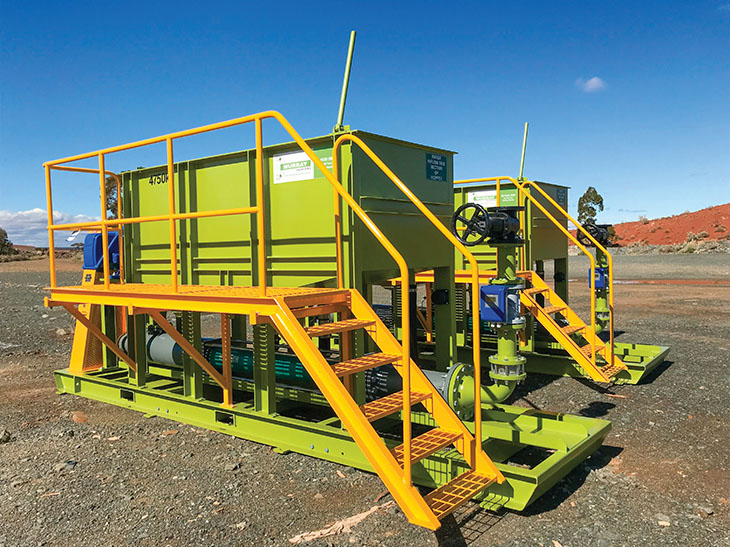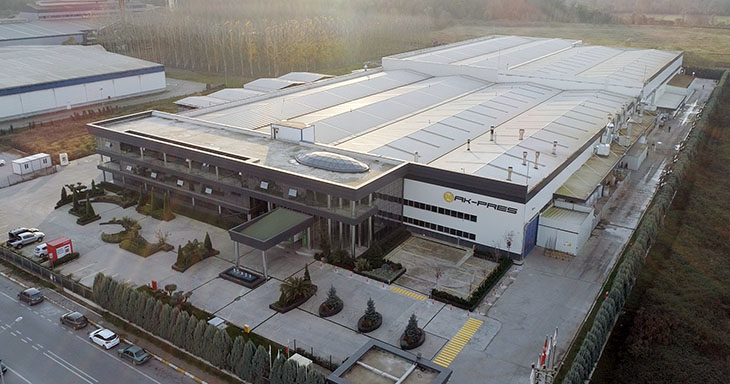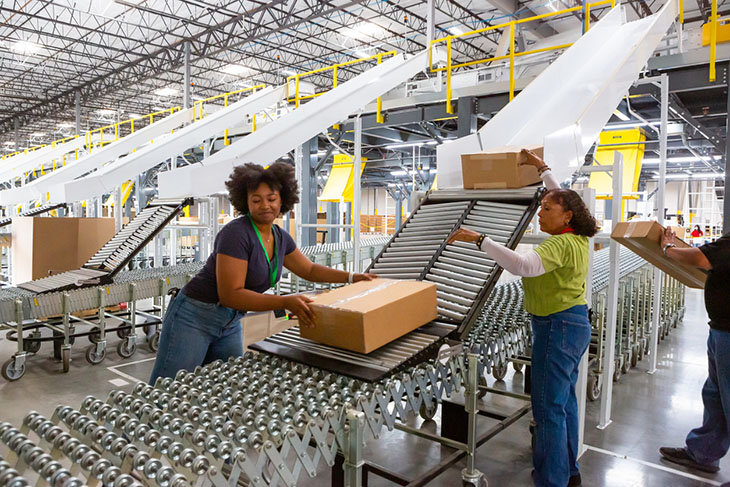Stones and slurry bring mine dewatering pumps to their limits: New system with 5 times longer service life also pumps mine water rich in sediments.
Lower energy consumption and running speed with consistent flow and pressure
Mining has been facing the perpetual fight against the ingress of rain and groundwater for many centuries. Although effective pump systems for water drainage are available, the high sediment load of up to five percent and the varying pH value of the mine water, as well as considerable energy consumption of the pumps continue to pose a challenge. Therefore, the Australian plant manufacturer Murray Engineering relies on NEMO® SY progressing cavity pumps from German supplier NETZSCH Pumpen & Systeme GmbH for their dewatering systems. In addition to a metal filter screen, which filters larger solids already before they pass into the pump, the unit is equipped with paddles: blades mounted on the coupling rod, keeping stones as well as slurry in the intake housing suspended, thus preventing blockages. This way, the drainage system achieves a flow of, for example, 72 m3/h at a pressure of 18 bar, already with a running speed of 320 rpm. This lowers the energy consumption to just 55 kW. To work with the local geological as well as climatic conditions of the respective application and to protect against abrasion, all system parts are available in different materials, including coated stainless steel or duplex steel.
“When mining companies work below groundwater level, at the latest, they must start to protect themselves against flooding – this applies to mines underground as well as above ground,” says Greg Pratt, Sales and Marketing Manager at Murray Engineering. “This is because water seeping in can destabilise the pit walls, and be poisonous in certain circumstances, which, in addition to production and the functioning of complex system, affects the safety of workers above all.” This is either caused from below due to groundwater seeping in, or due to unchecked water discharge on the surface, for example caused by heavy rainfall or flash flooding. “Even though drainage is one of the oldest and pervasive topics in mining, it still is repeatedly underestimated to this day,” says Greg Pratt from Murray.
“Many companies use conventional water pumps, which, due to their high solid content of up to five percent as well as the abrasive properties of the mine water, get damaged up to no longer being operational within just a few weeks or even a couple of days,” says Monica Mitterstein, Global Manager Mining & Explosives at NETZSCH. “This leads to unnecessary production failures and carries high maintenance as well as repair costs.” In comparison, suitable, but firmly mounted pump stations on the different levels to which the water is pumped from the numerous reservoirs by means of submersible centrifugal pumps require a high plant density and high maintenance effort underground. To resolve these issues, Murray Engineering is specialising in the development of mobile and durable dewatering systems for mining applications. For this, the Australian mining expert has been using NEMO® SY progressing cavity pumps from NETZSCH since 2018. These are mounted on a flexible dewatering slide, whose positioning can be adapted to the requirement of water drainage with progressive mining activities, so that fewer pumping stations are required on site overall.
Fail-safe operation with low running costs
The dewatering slide from Murray Engineering can be moved in two directions by means of a forklift. A collector tank accounts for the largest part of the construction, whose volume is adapted to the capacity of the respective pump, which in turn is mounted below or adjacent to the tank as required. It is already equipped with a metal filter screen at the factory, which catches larger solids such as stones and clumps, before these can reach the intake housing. “However, filtering in the tank alone is not sufficient to fully prevent blockages and damage inside the pump,” says Monica Mitterstein from NETZSCH. “For this reason, the coupling rod of the progressing cavity pump is additionally equipped with paddles.” These are special mixing blades, which keep the pumped solids suspended due to their movement, thus preventing a build-up in the intake housing.
Adding to this is the continuous and low-pulsation flow rate with minimum shear forces. For example, the NEMO® SY pumps can guarantee a required flow of 72 m3/h at a specified pressure of 18 bar already at a running speed of around 320 rpm. “This is significantly slower than the pumps of other pump manufacturers, which we compared for our dewatering system,” adds Greg Pratt from Murray. This way, even highly abrasive latrine sludge can be pumped without risk. A motor capacity of 55 kW is sufficient for the specified application scenario to drive the progressing cavity pump fail-safe. “On the one hand, the use of the NEMO® SY pumps also decisively increases the maintenance intervals”, says Greg Pratt from Murray. “On the other hand, wear of the individual components, and thus the requirement of spare parts, as well as energy consumption, are reduced long-term.”
Individual design enables 5 times longer plant lifespan
In addition to the large proportion of stone and slurry, the mine water can also be contaminated with chemically reactive substances depending on the type of the mine, and have very acidic or alkaline pH values. For this reason, all components of the dewatering system are available in different materials, to ensure the best possible wear and corrosion resistance. This includes chrome-plated and tungsten-carbide-coated stainless steels as well as duplex and super duplex steels for the rotor, as well as a number of rubber compounds with varying mechanical and chemical properties in case of the stator. Furthermore, the SY design of the NEMO® pumps also enables different options for sealing the shaft, including liquid or mechanical seals. “The optimum design of the progressing cavity pumps in combination with the screen in the collection tank and the paddles on the coupling rod enables a four to five times longer life for the entire dewatering system,” says Monica Mitterstein from NETZSCH.
More information can be found at https://www.murrayengineering.com.au/ and https://pumps-systems.netzsch.com/






















